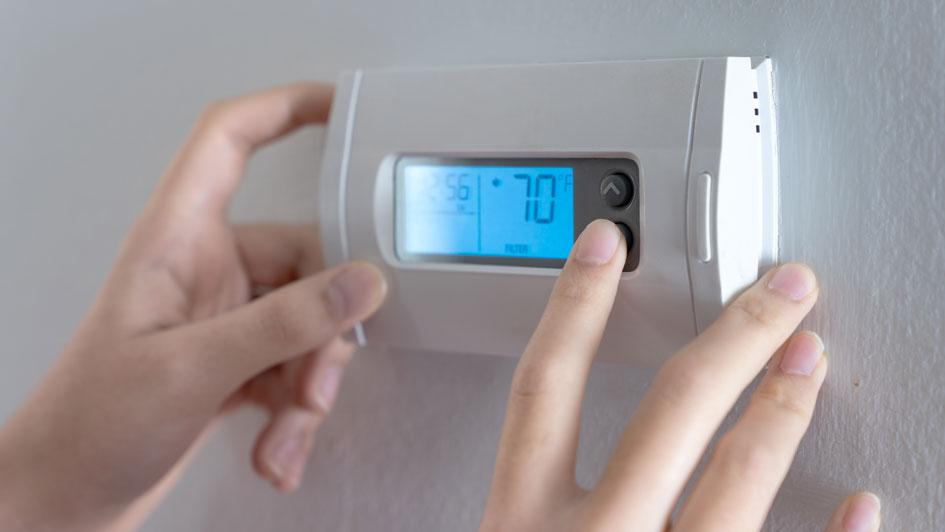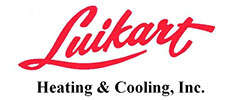
Everyone’s always looking to save money on their utility bills, but you should know there’s a way to lower energy use, even when you're not even home.
The key is your thermostat. By learning more about its special features and settings, you can help the thermostat plan for your preferred temperatures. That means you can have different temperature settings for when you’re home, away or even when you’re sleeping.
By trying a few of these schedules, you can enjoy comfy temperatures while also keeping more of your money. Check out our guide on how your thermostat can save you money in the summer:
While at Home
Pretty much whenever you're home, you want comfortable temperatures. That’s why it’s best to set your thermostat lower in the summer while you are in the house to appreciate the cool air.
But the most energy-efficient temperatures for when you're in your home during the summer is actually around 78 and 80 degrees Fahrenheit. This way, you can stay cool while still keeping your energy bills low.
While Away
When it comes to setting the temperature for a vacation or other trip away from the house, the majority of homeowners will set the thermostat higher than normal.
If your home is located somewhere a little cooler, you can set the thermostat to temperatures as high as 88 degrees while no one is home before lowering it back to the sweet spot of 78-80 degrees when you or a family member return. This way, your air conditioning unit won’t be working overtime to keep an empty house cool.
While Asleep
For a full night's rest during summer weather, you want your thermostat set at a comfortable temperature. A great place to start is between 68-72 degrees Fahrenheit. There's less risk of getting too hot or too cold at some point overnight.
Other Ways to Use Less Energy:
- Put in a smart thermostat: Trying a smart thermostat in the summer is an excellent way to reduce energy costs by automatically adjusting to your lifestyle and home environment. A smart thermostat manages the temperature if you are home or sleeping, before allowing it to warm up when no one is home. Using reputed brands and models such as the Lennox iComfort, you can adjust the temperature remotely through your smartphone, tablet or laptop. Scheduling smart thermostat installation in your Newark home is an effortless way to set the correct temperature whether you're at home or across the country.
- Replace current equipment with a newer HVAC system: A new HVAC system is another great option for long-term energy savings. By investing in a more energy-efficient system, your utility bills will be lower because it requires less energy to reach your preferred temperatures. Air conditioning installation in Newark is a great way to beat the heat in the summer.
- Stay on top of routine AC maintenance: Whether or not you keep up with regular air conditioning maintenance in Newark can have a big impact on your monthly energy use. If you stay on top of cleaning key components like the coils, checking for damage and keeping vents clear of dust and debris, this can help your HVAC system perform better during day-to-day use.. Increasing efficiency also limits strain on the unit and lowers operational costs, resulting in lower energy usage and subsequently, smaller bills.
- Clean or replace the air filter on a regular basis: Regularly changing the air filters in your HVAC system saves money by improving airflow. When filters are clogged with dirt and debris, an AC unit has to work harder, and the added strain may impact the system’s life span and result in breakdowns.
- Check if you have enough insulation in the attic: Insulation is a vital part of maintaining an energy-efficient home, securing the hot air outside and the cool air inside over the summer. The North American Insulation Manufacturers Association (NAIMA) suggests that homeowners living in southern climates should have at least 13-14 inches of insulation, while those in northern U.S. states should have 16-18 inches.
- Check your ductwork: A leak in the air ducts could increase your energy bills much more than 20 percent, plus it can also lead to problems with your water heater, clothes dryer and other appliances throughout your home. Finding any leaks fast and sealing them can address both concerns.
- Seal all other leaky spots in your home: Sealing leaky spots in your home with caulk, foam sealant or weather-stripping can help keep it cooler on hot summer days. It’s also important to check for any gaps around windows, doors and even outdoor fixtures. Taking the time to seal up any leaks now can help you save a lot in the long term.
